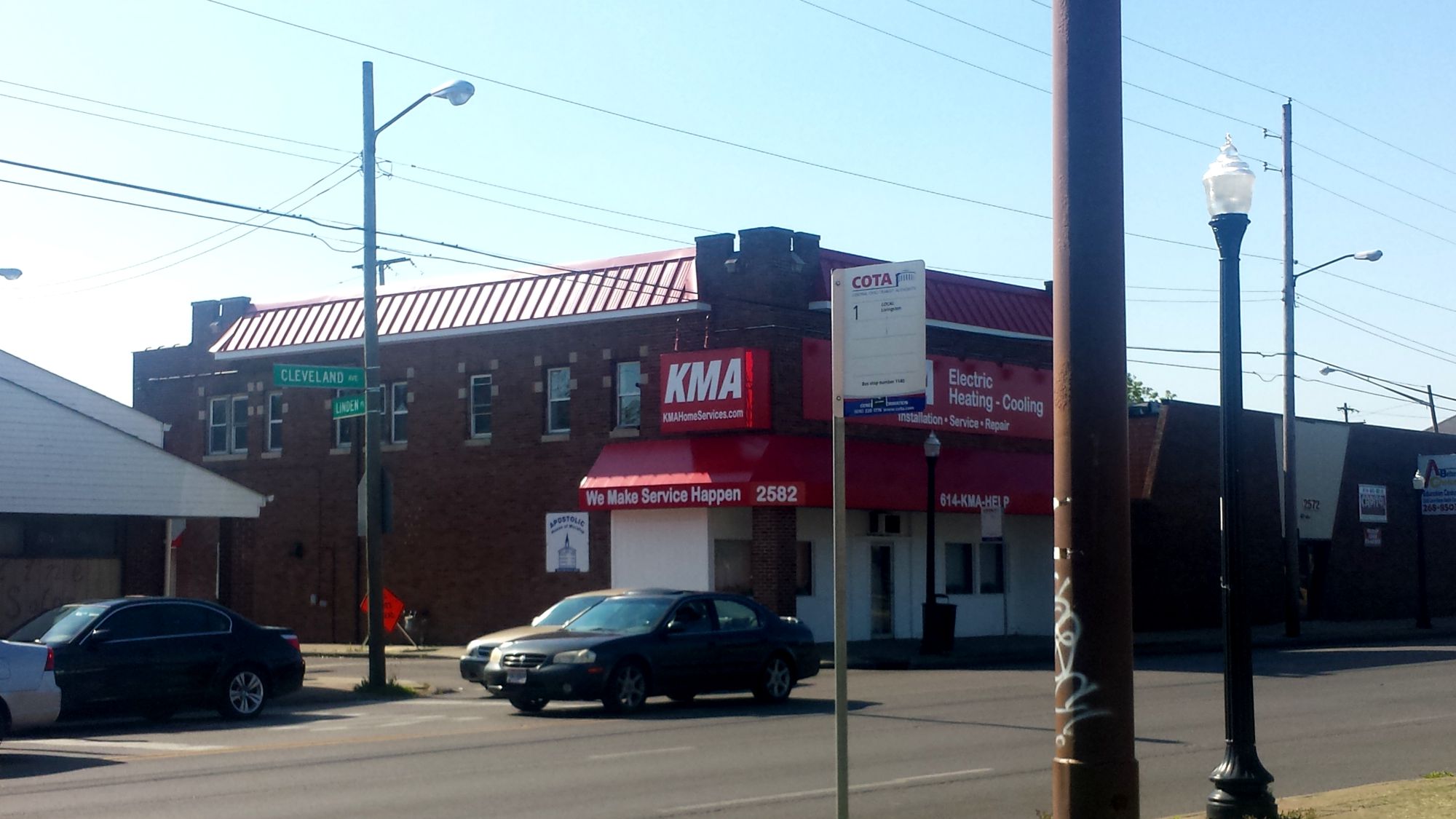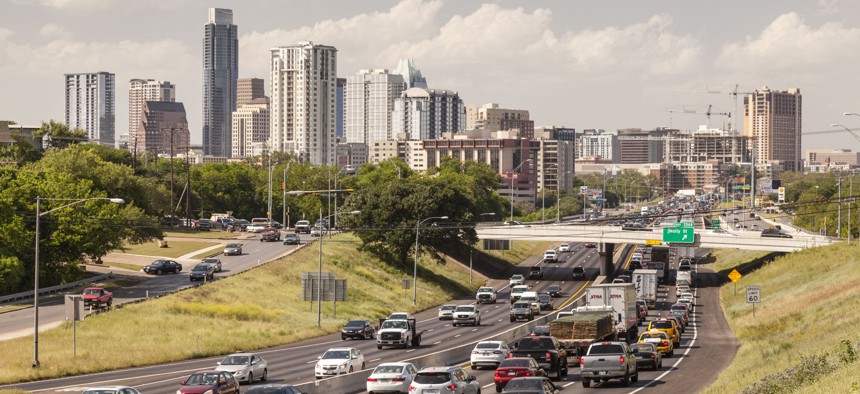Connecting state and local government leaders
Being a smart city means far more than just catering to economically-advantaged tech-savvy individuals. It’s also about effective use of technology to bridge divides in local communities.
There are plenty of Austinites who are still very much angered with their city leaders over the way Uber and Lyft left the tech-savvy Texas capital in May.
After supporters of the ride-booking companies lost their campaign this spring to pass Proposal 1, which would have overturned new city regulations that Uber and Lyft found onerous and stifling, it’s been a sore subject.
So it shouldn’t be a surprise that when Austin City Hall received the bad news late last month that it had lost the U.S. Department of Transportation’s Smart City Challenge—and the $50 million in federal and private funding pledges for smart city infrastructure investments that was up for grabs—to Columbus, Ohio, there was some schadenfreude that quickly bubbled to the surface.
A chorus of observers made this connection: Austin may have lost because of the city’s new Uber and Lyft regulations and the rejection of Proposal 1 at the ballot box.
Continued below ...
@MayorAdler Good job #atxcouncil for loosing the #smartcity bid. You should have kept @Uber_ATX & @lyft in Austin, you might have won.
— Bretagne Sammons (@bsammons) June 21, 2016
@ErinJ_KVUE @KVUE Austin lost the Smart City Challenge when it kicked Uber and Lyft out of town
— Robert Walker (@austinroberto) June 21, 2016
Those observations were, of course, hot takes and they give the impression that app-based transportation companies form the foundation of what makes a city smart or not.
Austin’s acrimonious app wars may not have helped its bid—after all, the investment arm of Alphabet’s Google, which has partnered with the Smart City Challenge through Sidewalk Labs, certainly has a vested interest in Uber—but it’s important to remember that the Smart City Challenge wasn’t a competition measured by how much a municipality has accommodated Uber and Lyft. The competition was built upon other evaluation criteria far more important than serving the needs of consumers who demand convenience from app-based ride-booking companies.
I’ll admit that I was initially skeptical of Columbus being one of the six Smart City Challenge finalists—the others, beyond Austin, were Denver, Kansas City, Pittsburgh, Portland and San Francisco. Ohio’s capital city isn’t usually grouped among the nation’s leading tech hubs. And its current bus-centric public transit network, under the jurisdiction of the Central Ohio Transit Authority, is fairly rudimentary compared to some of the finalist cities like, say, Portland.
That made Columbus a dark horse in the competition. Ohio’s capital city, in many ways, has a clean slate to work with instead of dealing with legacy transportation investments. At the same time, the city’s Smart City Challenge plan isn’t a silver bullet to solve many of the city’s other transit needs, as the Green Lake Blue City transit blog detailed in a recent assessment.
So for better or worse, while some finalist cities had more comprehensive proposals, the Columbus plan was very much focused on a few core elements. (I thought Pittsburgh had a well-constructed proposal for the similar reasons.)
Looking at the bid from Columbus more closely, there were four critical strengths that likely gave its Smart City Challenge plan an edge over the other six finalist cities.
- 1.) Money: The team that put the Columbus bid together had secured an additional $90 million in funding commitments from corporate and other local stakeholders, including Ohio State University, Battelle, American Electric Power, IBM and Honda. Selecting Columbus meant $140 million in future investment, not $50 million. The group of Columbus stakeholders and the additional local funding commitments may very well have been major deciding factors that put Ohio’s capital city out in front.
- 2.) An Existing Foundation But Also a Blank Slate: CMAX, COTA’s forthcoming 15.6-mile bus rapid transit line along the Cleveland Avenue corridor, played a starring role in the Smart City Challenge plan submitted by Columbus, which I profiled for Route Fifty last month. In early June, the Federal Transit Administration awarded COTA $37.5 million in funding for CMAX. The $90 million in additional local funding, plus the $50 million in Smart City Challenge funds—$40 million from the USDOT and $10 million from Vulcan Inc.—means that the $37.5 million the FTA already put into CMAX will, over time, help support $140 million more in public and private investment. Since Columbus’s public transit infrastructure is currently fairly basic, it allows a relative blank slate and flexibility for leaders, who won’t encumbered much by legacy transportation investments when pressing forward on new mobility models.

- 3.) Last-Mile Quandary: Autonomous vehicles played an important role in the plans submitted by the Smart City Challenge finalist cities. In Columbus, the autonomous car component involves the Easton Transit Center, a suburban bus hub near a Sam’s Club and a Japanese steakhouse (but not much else). When I passed through Columbus in May and checked out this transit center, I better understood an important problem Columbus is trying to solve here: How can you better connect Columbus retail workers—including those dependent on COTA bus service—to the massive Easton Town Center shopping hub? The two aren’t immediately adjacent. Walking, the distance between the transit center and the town center is about one mile, and involves traversing unfriendly sprawling suburban territory. And while there are buses that currently serve the massive shopping complex, a shuttle network of autonomous vehicles as envisioned in the Smart City Challenge plan could better bridge that “last mile” gap. And if new mobility innovations through autonomous vehicles emerge from public and private mobility investments in this sprawling suburban environment, it could be adapted for so many other U.S. cities struggling with last-mile challenges.
- 4.) Social Equity: In Kansas City, The Pitch alt-weekly said that Columbus played the “sick kid card” in order to win the Smart City Challenge. That’s an unfortunate choice of words, but it hits on something that continues to challenge the technology sector: Bridging the digital divide and using technology to empower everyone, not just those who can afford on-demand transportation options like Uber and Lyft. The “sick kid card” refers to poorer neighborhoods in Columbus along the planned CMAX bus rapid transit line that have higher rates of infant mortality, limited access to prenatal care and other medical services and lower rates of car ownership. (Earlier this year, our Atlantic Media colleagues at CityLab took a closer look at this public health problem in the Columbus neighborhood of South Linden.) Unlike many of the suburban shoppers who can afford to drive to Easton Town Center, “envisioned to be the most upscale, aspirational shopping destination in Columbus,” there are bus-dependent residents living only a few miles away who not only can’t afford to shop at the Crate & Barrel, but also can’t afford a car to drive their kids to the pediatrician. In its bid, Columbus was also very interested in figuring out ways to connect those who are dependent on cash payments to access transportation services that are increasingly accessed through electronic smart cards and other digital means. (That’s where testing and implementing Flow, Google’s transportation data and analytics platform, will be particularly interesting to monitor.)

As U.S. Transportation Secretary Anthony Foxx when officially announcing the winning bid, Columbus was “able to connect the problems they identified to specific technology solutions that are measurable.”
Austin, like many other cities figuring out how to deal with sprawling suburbanized landscapes, shares many of the same challenges that Columbus faces when it comes to economic inequality—and they are more pronounced in the Texas capital city in some ways.
“We’re the most economically segregated city in the country,” Austin Mayor Steve Adler told Route Fifty in our profile on his city’s Smart City Challenge bid. “We have health outcomes that are being determined by ZIP code. We have one of the highest rates of suburban poverty growth in the country. So our challenges are great.”
Indeed they are. Unfortunately for Austin, Columbus was just better in making its case to address its equity and mobility challenges through technology and assembling nearly $100 million more in additional funding for its plan compared to most of the other cities.
But here’s an important thing to remember when thinking about what makes a city “smart,” whether it’s Austin or anywhere else: Being a smart city isn’t simply an exercise in enabling people to travel from Point A to Point B as quickly as possible using a smartphone app. Not everyone has that luxury—a luxury that many people in the tech sector take for granted.
Michael Grass is Executive Editor of Government Executive’s Route Fifty and is based in Seattle. He is the founding co-editor of DCist.com and has worked as an editor and writer for Washington City Paper, The Huffington Post, The Washington Post’s Express and Roll Call. In a previous professional life, in 2002, he worked as a consultant on a Federal Transit Administration post-9/11 emergency preparedness and safety program with local transit agencies, first responders and agencies at the state, county and municipal level.

NEXT STORY: Boston's ‘Situational Awareness’ on the Fourth of July




